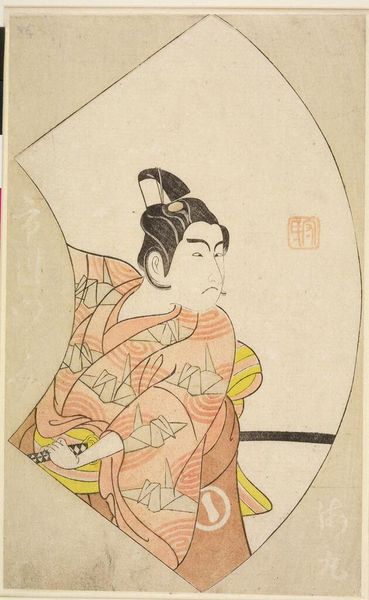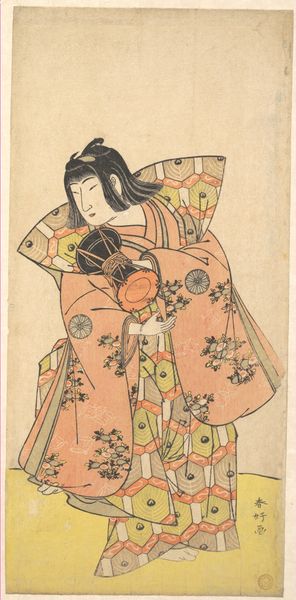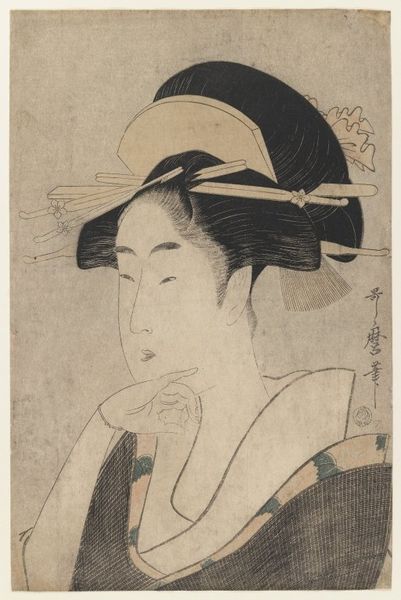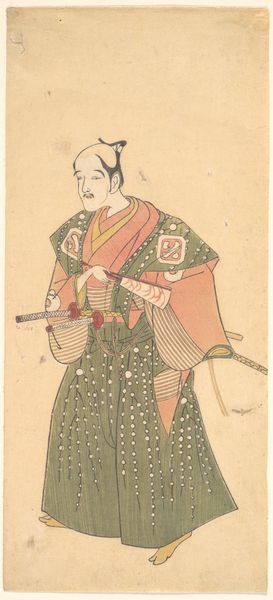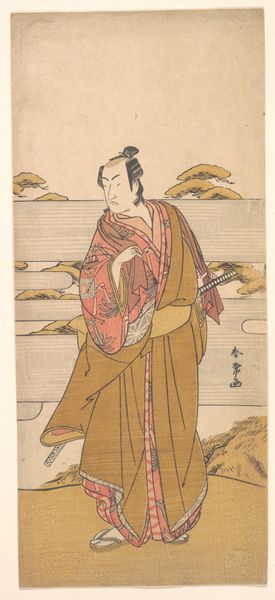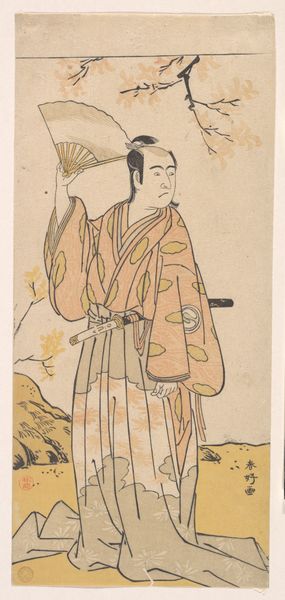
# print
#
asian-art
#
ukiyo-e
#
figuration
Dimensions: H. 27 3/16 in. (69.1 cm); W. 5 in. (12.7 cm)
Copyright: Public Domain
Curator: This print, dating from the late 18th century, is titled "In the Yoshiwara District" and was created by Isoda Koryūsai. Immediately striking, isn't it? Editor: It's… muted. The tones are subdued, almost faded. Makes me wonder about the pigments used, how the colors were achieved back then, the process. And that incredibly tall, slender format, it focuses all attention on the figure. Curator: Absolutely. The print belongs to the Ukiyo-e tradition, which literally translates to "pictures of the floating world.” This period emphasized the impermanence and fleeting pleasures, often depicting courtesans and actors, celebrating their elevated, fashionable lifestyles while highlighting social disparities. The Yoshiwara was the pleasure district, a space both desired and often constrained by gender, class, and obligation. Editor: We're seeing a woman, or perhaps two. One much further back, as if within the building, and the central one walking on the street. Her kimono, and even the bundled cloth, are very textured but quite subtle in tone. The woodblock print making involved a team of artisans—the artist, block carver, and printer. Labor division within craft... all part of the social dynamic this captures, isn’t it? Curator: Precisely! Consider also that, within that system, it was a male dominated world interpreting images of women, especially in this specific district. So much is revealed when we view the artwork and question issues like subject position and the gaze. Her subdued dress, although fine, hints at her place within a defined societal hierarchy and its related cultural narratives. What power did they actually possess when the image, itself a commodity, also captured an unequal representation? Editor: I wonder about the specific wood used for the printing blocks. Did the printer select different blocks for the different fabrics? Did they import woods for sharper, crisper lines, and were they restricted from certain choices? Those details could give a richer understanding of access and the marketplace driving the making of these prints. Curator: Interesting insights on materiality, certainly. Yet it makes us contemplate who these women truly were—individuals within, yet also against the established framework, shaping their stories. Perhaps they could utilize and maneuver within set systems; they did leave some cultural markings of personal creativity and subversion. The way they adorned themselves could carry complex indications. Editor: You're right. This brings to light the hidden aspects that go beyond just admiring a beautiful image. Looking at it now, considering it less from solely a crafted material good viewpoint lets one contemplate beyond a fleeting scene. Curator: Indeed. Analyzing those intersecting realities allows us to reconsider and, maybe, truly honor its diverse figures. Editor: Agreed. Considering this print and all it potentially contains offers much to investigate regarding artistic production and lived realities.
Comments
No comments
Be the first to comment and join the conversation on the ultimate creative platform.



